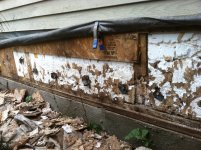In the spring, we will be building a new house. I am looking at SIP panels for the outside walls. We live in a cold northern climate and it makes good senses from an energy point of view.
My question is, has anyone used these to build a house? If so any feedback or suggestions on them? Also any alternative products such as raycore etc. Thanks!
My question is, has anyone used these to build a house? If so any feedback or suggestions on them? Also any alternative products such as raycore etc. Thanks!

